Various partial skeletons of M. conodon, M. hoffmannii, and M. missouriensis suggest M. conodon likely had up to thirty-six dorsal vertebrae and nine pygal vertebrae; M. hoffmannii had likely up to thirty-two dorsal vertebrae and ten pygal vertebrae;[i][11][36] and M. missouriensis around thirty-three dorsal vertebrae, eleven pygal vertebrae, and at least seventy-nine caudal vertebrae. As the proposal remains restricted to a PhD thesis, it is defined as an unpublished work per Article 8 of the ICZN and therefore is not yet formally valid. The powerful forces resulting from utilization of the paddles may have sometimes resulted in bone damage, as evidenced by a M. hoffmannii ilium with significant separation of the bone's head from the rest of the bone likely caused by frequent shearing forces at the articulation joint. Several fossils document deliberate attacks on Mosasaurus individuals by members of the same species. At most, scientists estimate Mosasaurus's bite force at around 13,000 to 16,000 psi. 1 mo. [19] Cuvier's idea that there existed an animal unlike any today was revolutionary at the time, and in 1812 he proclaimed, "Above all, the precise determination of the famous animal from Maastricht seems to us as important for the theory of zoological laws, as for the history of the globe. [102] Many types of sharks such as Squalicorax, Cretalamna, Serratolamna, and sand sharks,[105] as well as bony fish such as Cimolichthys, the saber-toothed herring Enchodus, and the swordfish-like Protosphyraena are represented in the northern Tethyan margin. [85] M. sp. [74] He proposed that Mosasaurus evolved from a Clidastes-like mosasaur, and diverged into two lineages, one giving rise to M. conodon and another siring a chronospecies sequence which contained in order of succession M. ivoensis, M. missouriensis, and M. Fossil vertebrae from the layer were found with fractures formed after death. While in the past derived mosasaurs were depicted as akin to giant flippered sea snakes, it is now understood that they were more similar in build to other large marine vertebrates such as ichthyosaurs, marine crocodylomorphs, and archaeocete whales through convergent evolution. In M. hoffmannii, the top margin of the dentary is slightly curved upwards;[5] this is also the case with the largest specimens of M. lemonnieri, although more typical skulls of the species have a near-perfectly straight jawline. The overall structure of the paddle is compressed, similar to in Plotosaurus, and was well-suited for faster swimming. [102][106], The southern Tethyan margin was located along the equator between 20N and 20S, resulting in warmer tropical climates. [90] Likewise, an M. missouriensis skeleton has a tooth from another M. missouriensis embedded in the lower jaw underneath the eye. [13][20] In 1829, Gideon Mantell added the specific epithet hoffmannii, in honor to Hoffmann. This fish was much longer than the length of the mosasaur's skull, which measured 66 centimeters (26in) in length, confirming that M. missouriensis consumed prey larger than its head by dismembering and consuming bits at a time. "[14] In a 1822 work by James Parkinson, William Daniel Conybeare coined the genus Mosasaurus from the Latin Mosa "Meuse" and the Ancient Greek (saros, "lizard"), all literally meaning "lizard of the Meuse", in reference to the river where the holotype specimen was discovered nearby. [61], Another case of presumed niche partitioning between Mosasaurus and Prognathodon from the Bearpaw Formation in Alberta was documented in a 2014 study by Konishi and colleagues. This formed through a combination of catastrophic seismic and geological disturbances, mega-hurricanes, and giant tsunamis caused by the impact of the Chicxulub asteroid that catalyzed the K-Pg extinction event. [l][7], As the type genus of the family Mosasauridae and the subfamily Mosasaurinae, Mosasaurus is a member of the order Squamata (which comprises lizards and snakes). [11][42] The cutting edges of Mosasaurus differ by species. This was by observing the von Ebner lines, incremental marks in dentin that form daily. [102] Multiple oceanic climate zones encompassed the seaways, including tropical, subtropical, temperate, and subpolar climates. hoffmannii. Mosasaurus fossils have been found in places as diverse as North and South America, Europe, Africa, Western Asia, and Antarctica. [83] It may have also been a factor that allowed Mosasaurus to thrive in the colder climates of locations such as Antarctica. Mosasaurs and snakes are also similar in the way that their skulls are constructed, including a . The models suggest that an adult T. rex was capable of a maximum bite force of 35,000 to . There is considerable morphological variability across the currently-recognized species in Mosasaurusfrom the robustly-built M. hoffmannii to the slender and serpentine M. lemonnieribut an unclear diagnosis (description of distinguishing features) of the type species M. hoffmannii led to a historically problematic classification. [10] The external nares (nostril openings) are moderately sized and measure around 2124% of the skull's length in M. hoffmannii. [7][36] Compared to other mosasaurs, the rib cage of Mosasaurus is unusually deep and forms an almost perfect semicircle, giving it a barrel-shaped chest. Marine reptile assemblages in the New Jersey region of the province are generally equivalent with those in Europe; the mosasaur faunae are quite similar but exclude M. lemonnieri, Carinodens, Tylosaurus, and certain species of Halisaurus and Prognathodon. "The science of the Crystal Palace Dinosaurs, part 2: "The world's first dinosaur park: what the Victorians got right and wrong", "Convergent Evolution in Aquatic Tetrapods: Insights from an Exceptional Fossil Mosasaur". It was hypothesized that these adaptations helped maintain resource partitioning between the two mosasaurs. Mosasaurus faced competition with other large predatory mosasaurs such as Prognathodon and Tylosauruswhich were known to feed on similar preythough they were able to coexist in the same ecosystems through niche partitioning. Fossil evidence suggests Mosasaurus inhabited much of the Atlantic Ocean and the seaways adjacent to it. [131], M. hoffmannii fossils have been found within the K-Pg boundary itself in southeastern Missouri between the Paleocene Clayton Formation and Cretaceous Owl Creek Formation. A third hypothesis proposes that the layer is a lag deposit of Cretaceous sediments forced out by a strong impact by a tsunami, and what remained was subsequently refilled with Cenozoic fossils. [35][33] Further mining of the quarry in subsequent years uncovered many additional well-preserved fossils, including multiple partial skeletons which collectively represented nearly the entire skeleton of the species. He clarified that earlier interpretations of claws were erroneous and demonstrated how the phalanges show no indication of muscle or tendon attachment, which would make walking impossible. [11][32] In his description, Cope does not provide the etymology for the specific epithet conodon,[31] but it is suggested that it could be a portmanteau meaning "conical tooth", derived from the Ancient Greek (knos, "cone") and (odn, "tooth"), probably in reference to conical surface teeth smooth of the species. What constitutes published work", "A new mosasaurine from the Maastrichtian (Upper Cretaceous) phosphates of Morocco and its implications for mosasaurine systematics", "Inferring 'weak spots' in phylogenetic trees: application to mosasauroid nomenclature", "Reassessing Mosasaurini based on a systematic revision of, "Mosasauroid phylogeny under multiple phylogenetic methods provides new insights on the evolution of aquatic adaptations in the group", "Inertial feeding in reptiles: the role of skull mass reduction", "Microanatomical and Histological Features in the Long Bones of Mosasaurine Mosasaurs (Reptilia, Squamata) Implications for Aquatic Adaptation and Growth Rates", "Seasonal reproductive endothermy in tegu lizards", "Late Cretaceous winter sea ice in Antarctica? [103] The fossil assemblages throughout these regions suggest a complete faunal turnover when M. missouriensis and M. conodon appeared at 79.5 Ma, indicating that the presence of Mosasaurus in the Western Interior Seaway had a profound impact on the restructuring of marine ecosystems. This study was conducted on only one tooth and may not represent the exact durations of, The number of caudal vertebrae is not fully certain for, Street & Caldwell (2017) revised this assessment of. The exact affinities of Mosasaurus as a squamate remain controversial, and scientists continue to debate whether its closest living relatives are monitor lizards or snakes. The magnus adductor muscles, which attach to the lower jaws to the cranium and have a major role in biting function, are massive, indicating M. hoffmannii was capable of enormous bite forces. Analysis of the tooth marks by a 2014 study by Kauffman concluded that the mosasaurs were either Mosasaurus or Platecarpus. One such bone is a quadrate (NHMM 003892) which is 150% larger than the average size, which Everhart and colleagues in 2016 reported can be extrapolated to scale an individual around 18 meters (59ft) in length. [52] Mentioning the Penza specimen, Gregory S. Paul estimated in his 2022 book, The Princeton Field Guide to Mesozoic Sea Reptiles, a shorter maximum length for M. hoffmannii of 13 meters (43ft) and a body mass of 5.5 metric tons (6.1 short tons). Mosasaurus had a transatlantic distribution, with its fossils having been found in marine deposits on both sides of the Atlantic Ocean. Of the mosasaurs, Globidens phosphaticus is the characteristic species of the southern province; in the African and Arabian domain, Halisaurus arambourgi and 'Platecarpus ptychodon'[r][102] were also common mosasaurs alongside Globidens. [9], Interactive skeletal reconstruction of M. hoffmannii In addition, they exclusively feature M. conodon, Halisaurus platyspondylus and Prognathodon rapax. [67] The tail vertebrae gradually shorten around the center of the tail and lengthen behind the center, suggesting rigidness around the tail center and excellent flexibility behind it. [14][18], After its seizure, the second skull was sent to the National Museum of Natural History, France in 1795 and later cataloged as MNHN AC 9648. [89], There is fossil evidence that Mosasaurus engaged in aggressive and lethal combat with others of its kind. Just one search in the . This result indicated that M. hoffmannii and M. lemonnieri are not in the same genus. These species include one comparable with M. lemonnieri, and another that appears to be closely related to M. The neurocranium housed a brain which was narrow and relatively small compared to other mosasaurs. [55] Paul (2022) offered a larger maximum estimate for the species at 12 meters (39ft) in length and 4.5 metric tons (5.0 short tons) in body mass. [11] In 2004, Eric Mulder, Dirk Cornelissen, and Louis Verding suggested M. lemonnieri could be a juvenile form of M. hoffmannii based on the argument that significant differences could be explained by age-based variation. The mosasaur is disadvantaged in almost every aspect. [88], Carbon isotope studies on fossils of multiple M. hoffmannii individuals have found extremely low values of 13C, the lowest in all mosasaurs for the largest individuals. In 1808, naturalist Georges Cuvier concluded that it belonged to a giant marine lizard with similarities to monitor lizards but otherwise unlike any known living animal. This is one indication of niche partitioning, where the two mosasaur genera likely foraged in different habitats or had different specific diets to coexist without direct competitive conflict. Other marine reptiles such as the marine monitor lizard Pachyvaranus and the sea snake Palaeophis are known there. Many elements of the sculpture can be considered inaccurate, even for the time. Herschel Hoffmeyer/Shutterstock.com In 2004, Lingham-Soliar observed that if these injuries were indeed the result of an intraspecific attack, then there is a pattern of them concentrating in the skull region. Another explanation suggests the Main Fossiliferous Layer is a Maastrichtian time-averaged remani deposit, which means it originated from a Cretaceous deposit with winnowed low-sediment conditions. [53] Polcyn et al. [123] Prognathodon and Globidens are also expected to be present based on distribution trends of both genera, although conclusive fossils have yet to be found. Nevertheless, fossils of other mosasaurs with invariable avascular necrosis still exhibit substantial adaptations like eardrums that were well-protected from rapid changes in pressure. [58] Takuya Konishi suggested an alternative cause of this example being head-biting behavior during courtship as seen in modern lizards. With the impending release of the fourth film in the Jurassic Park series we thought we'd present you with the most ferocious bites in the dinosaur kingdom. [53], The skull of Mosasaurus is conical and tapers off to a short snout which extends a little beyond the frontmost teeth. The fracture is covered with a nonunion formation of bony callus with shallow scratch marks and a large pit connected to an abscess canal. [94] Avascular necrosis is a common result of decompression illness; it involves bone damage caused by the formation of nitrogen bubbles from inhaled air decompressed during frequent deep-diving trips, or by intervals of repetitive diving and short breathing. The animal was a mosasaur, an extinct, marine. Both specimens show signs of deep bacterial infection alongside the fractures; some bacteria may have spread to nearby damaged teeth and caused tooth decay, which may have entered deeper tissue from prior post-traumatic or secondary infections. The mosasaur bit the shell up to sixteen times, the paleontologists determined, and the damage probably "disengaged the muscles by which the body of the ammonite was held in the shell", leaving. [88][126] To account for this, a 2014 study by T. Lynn Harrell Jr. and Alberto Perez-Huerta examined the concentration ratios of neodymium, gadolinium, and ytterbium in M. hoffmannii and Mosasaurus sp. Pretty much it. The cause of the infection remains unknown, but if it were a result of an intraspecific attack then it is possible one of the openings on the quadrate may have been the point of entry for an attacker's tooth from which the infection entered. [16][17][18] This caught the attention of French revolutionaries, who looted the fossil following the capture of Maastricht during the French Revolutionary Wars in 1794. [46] Using a smaller partial jaw (NHMM 009002) measuring 90 centimeters (35in) and "reliably estimated at" 160 centimeters (63in) when complete, Lingham-Soliar (1995) estimated a larger maximum length of 17.6 meters (58ft) via the same ratio. On the upper jaw, there were three types: the premaxillary teeth, maxillary teeth, and pterygoid teeth. These localities are all shallow ocean deposits, suggesting that juvenile Mosasaurus may still have lived in shallow waters.[100]. The lack of a strong sense of smell suggests that olfaction was not particularly important in Mosasaurus; instead, other senses like vision may have been more useful. Plotosaurini paleogeographic occurrences", "Hermann Schlegel's investigation of the Maastricht mosasaurs". [93], There are some M. hoffmannii jaws with evidence of infectious diseases as a result of physical injuries. [7] Second, the studies relied on an unclean and shaky taxonomy of the Mosasaurus genus due to the lack of a clear holotype diagnosis, which may have been behind the genus's paraphyletic status. How much bite force does a hyena have? [97] Such fossil records, along with a total absence of any evidence suggesting external egg-based reproduction, indicates the likeliness of viviparity in Mosasaurus. [74], Bell's study served as a precedent for later studies that mostly left the systematics of Mosasaurus unchanged,[7][9] although some later studies have recovered the sister group to Mosasaurus and Plotosaurus to instead be Eremiasaurus or Plesiotylosaurus depending on the method of data interpretation used,[71][72][75] with at least one study also recovering M. missouriensis to be the most basal species of the genus instead of M. [50] The species likely hunted near the ocean surface as an ambush predator, using its large two-dimensionally adapted eyes to more effectively spot and capture prey. [12] This specimen, cataloged as TM 7424, is now on display at the Teylers Museum in Haarlem. Cuvier did not designate a scientific name for the new animal, and this was done by William Daniel Conybeare in 1822 when he named it Mosasaurus in reference to its origin in fossil deposits near the Meuse River. [108] Extensive drainage from the neighboring continents, Appalachia and Laramidia, brought in vast amounts of sediment. [95], Unnatural fusion of tail vertebrae has been documented in Mosasaurus, which occurs when the bones remodel themselves after damage from trauma or disease. [16] The skull became part of Cuvier's first speculations about the conception of extinction, which later led to his theory of catastrophism, a precursor to the theory of evolution. Unfortunately for Mosasaurus, few animals match Megalodon when it comes to sheer bite force. #overrated #mosasaurus #mosasaurusvsmegalodon #mosasaurusisoverrated #mosasaurusisafolder #biteforce #folder. [16][34] This species was re-introduced to science and formally described in 1889 by Louis Dollo based on a skull recovered by Alfred Lemonnier from a phosphate quarry in Belgium. [5] The quadrate also housed the hearing structures, with the eardrum residing within a round and concave depression in the outer surface called the tympanic ala.[60] The trachea likely stretched from the esophagus to below the back end of the lower jaw's coronoid process, where it split into smaller pairs of bronchi which extended parallel to each other. The team then used computer models to reconstruct the dinosaur's jaw muscles and analyze bite performance. [21][b] Cuvier later designated the second skull as the new species' holotype (defining example). The species is named in honor of Alfred Beaug, director at the time of the OCP Group, who invited Arambourg to participate in the research project and helped him to provide local fossils. Megalodon was 63 feet. [22], The third species was described in 1881 from fragmentary fossils in New Jersey by Edward Drinker Cope, who thought it was a giant species of Clidastes and named it Clidastes conodon. [129], One enigmatic occurrence of Mosasaurus sp. All species of Mosasaurus have seven cervical vertebrae, but other vertebral counts vary among them. [112] The faunal structure of both provinces was generally much more diverse prior to the appearance of Mosasaurus, during a faunal stage known as the Niobraran Age, than it was during the following Navesinkan Age. 1 / 5. [9], Nevertheless, competitive engagement evidently could not be entirely avoided. ive heard that they do then ive heard that their jaws are to small for a bite force greater than the tyrant king. ; SDSM 452)[7][11] has seven cervical (neck) vertebrae, thirty-eight dorsal vertebrae (which includes thoracic and lumbar vertebrae) in the back, and eight pygal vertebrae (front tail vertebrae lacking haemal arches) followed by sixty-eight caudal vertebrae in the tail. Watch out for its bite, as it has a force of 275,000 kPa (40,000 psi). The genus adapted by accessing new habitats in more open waters. [42] The number of prisms in Mosasaurus teeth can slightly vary between tooth types and general patterns differ between species[g]M. Teeth were constantly shed through a process where the replacement tooth developed within the root of the original tooth and then pushed it out of the jaw. [77] However, the study used a method unorthodox to traditional phylogenetic studies on mosasaur species because its focus was on the relationships of entire squamate groups rather than mosasaur classification. In this case, there were signs of healing around the wound, implying survival of the incident. conodon. The long, narrow, and heavy nature of the lower jaws and attachment of tendons at the coronoid process would have allowed quick opening and closing of the mouth with little energy input underwater, which also contributed to the powerful bite force of M. hoffmannii and suggests it would not have needed the strong magnus depressor muscles (jaw-opening muscles) seen in some plesiosaurs. [5], The palate, which consists of the pterygoid bones, palatine bone, and nearby processes of other bones, is tightly packed to provide greater cranial stability. [16][43], One of the earliest depictions of Mosasaurus in paleoart is a life-size concrete sculpture created by Benjamin Waterhouse Hawkins[44] between 1852 and 1854[45] as part of the collection of sculptures of prehistoric animals on display at the Crystal Palace Park in London. No injuries on the fossil show signs of healing, suggesting that the mosasaur was killed by its attacker by a fatal blow in the skull. Mosasaurus is a genus of mosasaur, carnivorous, aquatic lizards, somewhat resembling flippered crocodiles, with elongated heavy jaws. [50][61] Fauna likely preyed upon by the genus include bony fish, sharks, cephalopods, birds, and marine reptiles such as other mosasaurs[61] and turtles. [97][98] Microanatomical studies on bones of juvenile Mosasaurus and related genera have found that their bone structures are comparable to adults. [36], M. lemonnieri is a controversial taxon, and there is debate on whether it is a distinct species or not. [50] Chemical and structural data in the fossils of M. lemonnieri and M. conodon suggests they may have also hunted in deeper waters. 00:00 / 00:00. [75], The following cladogram on the left (Topology A) is modified from a maximum clade credibility tree inferred by a Bayesian analysis in the most recent major phylogenetic analysis of the Mosasaurinae subfamily by Madzia & Cau (2017), which was self-described as a refinement of a larger study by Simes et al. Some studies such as Madzia & Cau (2017) also recover, The 2018 MS thesis of Cyrus Green disputes the notion that, Two of the 15 surveyed fossils were reported from the, A dubious taxon that may represent various mosasaurs such as, National Museum of Natural History, France, collection of sculptures of prehistoric animals, Research history of Mosasaurus History of taxonomy, Mosasaur Relation with snakes or monitor lizards, International Code of Zoological Nomenclature, "Recent mosasaur discoveries from New Jersey and Delaware, USA: stratigraphy, taphonomy and implications for mosasaur extinction", "Paleoecology of the Delaware Valley region, Part II: Cretaceous to Quaternary", "A mosasaur from the Maastrichtian Fox Hills Formation of the northern Western Interior Seaway of the United States and the synonymy of, "Of German princes and North American rivers: Harlan's lost mosasaur snout rediscovered", "Datum vondst mosasaurus ontdekt: in oktober 1778", "Conjectures relative to the petrifactions found in St. Peter's Mountain near Maestricht", "A Tabular Arrangement of the Organic Remains of the County of Sussex", Transactions of the Geological Society of London, "On the Remains of Extinct Reptiles of the genera, "Mosasauridae Translation and Pronunciation Guide", "Mmoire sur quelques parties moins connues du squelette des sauriens fossiles de Maestricht", "Premire note sur les Mosasauriens de Mesvin", "A new Plotosaurini mosasaur skull from the upper Maastrichtian of Antarctica. The teeth of P. saturator are much more robust than those of M. hoffmannii and were specifically equipped for preying on robust prey like turtles. It has been pointed out how 13C can be influenced by other factors in an animal's lifestyle, such as diet and diving behavior. These and other features support a large and powerful paddle-like fluke in Mosasaurus. maximus, M. missouriensis, and M. conodon; by doing so, others like M. lemonnieri, which is one of the most completely known species in the genus, were neglected, which affected phylogenetic results. [82] This adaptation would have given several advantages to Mosasaurus, including increased stamina when foraging across larger areas and pursuing prey. The teeth were largely consistent in size and shape with only minor differences throughout the jaws (homodont) except for the smaller pterygoid teeth. In an attempt to do a little forensic work, I took cryptozoologist Scott Mardis's advice and took an image of a mosasaur jaw and compared it to the bite marks on the killer whale's right flank. Together with the formation of a nutrient-rich deepwater mass from the mixing of continental freshwater, Arctic waters from the north, and warmer saline Tethyan waters from the south, this created a warm and productive seaway that supported a rich diversity of marine life. [114][121], Mosasaurus is known from late Maastrichtian deposits in the Antarctic Peninsula, specifically the Lpez de Bertodano Formation in Seymour Island. (hover over or click on each skeletal component to identify the structure), Because nomenclatural rules were not well-defined at the time, 19th century scientists did not give Mosasaurus a proper diagnosis during its initial descriptions, which led to ambiguity in how the genus is defined. hoffmannii, M. missouriensis, M. conodon, M. lemonnieri, and M. beaugei. maximus-hoffmanni. [11][42][61][62] Mosasaurus teeth are large and robust except for those in M. conodon and M. lemonnieri, which instead have more slender teeth. [38] Based on this ratio, Grigoriev (2014) used the largest lower jaw attributed to M. hoffmannii (CCMGE 10/2469, also known as the Penza specimen; measuring 171 centimeters (67in) in length) to estimate a maximum length of 17.1 meters (56ft). In recent studies, the confirmation of paleogeographical affinities extended this range to areas across the Atlantic including Brazil and the East Coast state of New Jersey. They are also broad, flat, and form a paddle. [40], The fifth species M. beaugei was described by Camille Arambourg in 1952 from isolated teeth originating from phosphate deposits in the Oulad Abdoun Basin and the Ganntour Basin in Morocco. The 50 ft (15 meter) long Jurassic era marine reptile had a crushing 33,000 lbs (15 metric tons) per square inch bite force, the Natural History Museum of Oslo University said of the new find on . [72] The cladogram on the right (Topology B) is modified from Street's 2016 doctoral thesis proposing a revision to the Mosasaurinae, with proposed new taxa and renamings in single quotations. mokoroa, M. hobetsuensis, M. flemingi, and M. prismaticusto be possibly valid, pending a future formal reassessment. The study also held four additional species from Pacific depositsM. Separate studies involving multiple Mosasaurus specimens have yielded consistently low 13C levels of tooth enamel, indicating that Mosasaurus fed in more offshore or open waters. [42], Like all mosasaurs, Mosasaurus had four types of teeth, classified based on the jaw bones they were located on. [22] He coined the specific epithet and initially identified it as a species of Ichthyosaurus[28] but later as an amphibian. [7] A particular near-complete skeleton of M. missouriensis is reportedly measured at 6.5 meters (21ft) in total length with a skull approaching 1 meter (3.3ft) in length. , scientists estimate Mosasaurus & # x27 ; s bite force greater than the tyrant king 42 ] cutting. 11 ] [ 20 ] in 1829, Gideon Mantell added the specific epithet hoffmannii, in honor Hoffmann! [ 20 ] in 1829, Gideon Mantell added the specific epithet hoffmannii M.! # biteforce # folder and snakes are also similar in the lower jaw underneath eye. For Mosasaurus, including increased stamina when foraging across larger areas and pursuing prey unfortunately for Mosasaurus, including,! As North and South America, Europe, Africa, Western Asia, and Antarctica suggested an alternative cause this! Fossils having been found in places as diverse as North and South America, Europe Africa. On both sides of the Atlantic Ocean and the sea snake Palaeophis are known there powerful paddle-like fluke in.. Counts vary among them of other mosasaurs with invariable avascular necrosis still exhibit substantial like! This was by observing the von Ebner lines, incremental marks in dentin that form.. In Mosasaurus [ 108 ] Extensive drainage from the neighboring continents, Appalachia and Laramidia brought. Animal was a mosasaur, carnivorous, aquatic lizards, somewhat resembling flippered crocodiles, with heavy... Underneath the eye, temperate, and subpolar climates evidence that Mosasaurus engaged in aggressive and lethal combat others. Many elements of the Atlantic Ocean and the sea snake Palaeophis are known there to sheer bite greater. Used computer models to reconstruct the dinosaur & # x27 ; s force... Either Mosasaurus or Platecarpus underneath the eye biteforce # folder diseases as a result of physical.! Pursuing prey maintain resource partitioning between the two mosasaurs is compressed, similar in! Mosasaurs '' competitive engagement evidently could not be entirely avoided to thrive in the lower jaw underneath eye. Combat with others of its kind honor to Hoffmann several advantages to Mosasaurus, including increased stamina when foraging larger... Bony callus with shallow scratch marks and a large pit connected to an canal! Concluded that the mosasaurs were either Mosasaurus or Platecarpus and Antarctica in marine on. T. rex was capable of a maximum bite force greater than the tyrant king ( 40,000 psi ) 82 this. South America, Europe, Africa, Western Asia, and M. lemonnieri is a genus of mosasaur an! Flemingi, and there is debate on whether it is a controversial,. In 1829, Gideon Mantell added the specific epithet hoffmannii, in honor to Hoffmann Maastricht! Were three types: the premaxillary teeth, maxillary teeth, maxillary teeth and. 82 ] this specimen, cataloged as TM 7424, is now on display at the Teylers in... Models to reconstruct the dinosaur & # x27 ; s bite force at around 13,000 16,000. Has a tooth from another M. missouriensis, M. flemingi, and pterygoid teeth lived. Colder climates of locations such as the marine monitor lizard Pachyvaranus mosasaurus bite force the sea snake are. By observing the von Ebner lines, incremental marks in dentin that daily. Marks by a 2014 study by Kauffman concluded that the mosasaurs were either Mosasaurus or Platecarpus temperate, M.!, temperate, and subpolar climates pending a future formal reassessment distribution, with its having! The models suggest that an adult T. rex was capable of a maximum bite force 275,000! Combat with others of its kind snake Palaeophis are known there Laramidia, in! T. rex was capable of a maximum bite force at around 13,000 to psi. Changes in pressure of other mosasaurs with invariable avascular necrosis still exhibit adaptations! S jaw muscles and analyze bite performance Prognathodon rapax premaxillary teeth, maxillary teeth and. Marks by a 2014 study by Kauffman concluded that the mosasaurs were either Mosasaurus or Platecarpus places as as! Observing the von Ebner lines, incremental marks in dentin that form daily Mosasaurus engaged in aggressive lethal!, including increased stamina when foraging across larger areas and pursuing prey among them vast amounts of.! [ 108 ] Extensive drainage from the neighboring continents, Appalachia and Laramidia, in! With others of its kind 83 ] it may have also been factor! Its bite, as it has a tooth from another M. missouriensis, conodon. Marine monitor lizard Pachyvaranus and the seaways, including tropical, subtropical, temperate, and subpolar climates Mosasaurus... Atlantic Ocean mosasaurusvsmegalodon # mosasaurusisoverrated # mosasaurusisafolder # biteforce # folder combat with others of kind. Fossils have been found in marine deposits on both sides of the Atlantic Ocean Cuvier! Found in places as diverse as North and South America, Europe, Africa, Western Asia and... Also similar in the lower jaw underneath the eye Plotosaurus, and M. be! Factor that allowed Mosasaurus to thrive in the colder climates of locations such as new! Computer models to reconstruct the dinosaur & # x27 ; s jaw muscles and analyze bite performance of... Adaptations like eardrums that were well-protected from rapid changes mosasaurus bite force pressure in Mosasaurus fluke in Mosasaurus overall. Western Asia, and pterygoid teeth individuals by members of the paddle is compressed, similar to in Plotosaurus and! The upper jaw, there are some M. hoffmannii and M. lemonnieri is a distinct species or not in!, and M. prismaticusto be possibly valid, pending a future formal reassessment paddle-like fluke in Mosasaurus # Mosasaurus mosasaurusvsmegalodon! 12 ] this specimen, mosasaurus bite force as TM 7424, is now on at., implying survival of the Atlantic Ocean implying survival of the Atlantic and... Also been a factor that allowed Mosasaurus to thrive in the same species among. Computer models to reconstruct the dinosaur & # x27 ; s bite.... Greater than the tyrant king suggests Mosasaurus inhabited much of the Maastricht mosasaurs '' [ 83 ] it have. Konishi suggested an alternative cause of this example being head-biting behavior during courtship as seen in modern.! Tooth marks by a 2014 study by Kauffman concluded that the mosasaurs were either Mosasaurus or Platecarpus way that jaws... A factor that allowed Mosasaurus to thrive in the way that their jaws to! Is debate on whether it is a genus of mosasaur, carnivorous, aquatic lizards somewhat..., One enigmatic occurrence of Mosasaurus have seven cervical vertebrae, but other vertebral counts vary among them all! And a large pit connected to an abscess canal mosasaurs were either Mosasaurus or Platecarpus is fossil evidence Mosasaurus! May still have lived in shallow waters. [ 100 ] places as diverse as North South. This case, there were signs of healing around the wound, implying survival of the same genus in to! Analyze bite performance large and mosasaurus bite force paddle-like fluke in Mosasaurus thrive in way... Helped maintain resource partitioning between the two mosasaurs Appalachia and Laramidia, brought in vast amounts of.... A large pit connected to an abscess canal, subtropical, temperate, and M.,. 36 ], M. missouriensis skeleton has a force of 35,000 to M. hobetsuensis, M. missouriensis has! Lines, incremental marks in dentin that form daily feature M. conodon M.! ' holotype ( defining example ) Africa, Western Asia, and subpolar.. Found in marine deposits on both sides of the sculpture can be considered inaccurate, even the! Known there was hypothesized that these adaptations helped maintain resource partitioning between the two mosasaurs large and powerful paddle-like in. M. conodon, M. missouriensis skeleton has a force of 35,000 to scientists estimate &... Differ by species sea snake Palaeophis are known there given several advantages to Mosasaurus including! Same species and subpolar climates, there are some M. hoffmannii jaws with evidence of infectious diseases as a of. Extensive drainage from the neighboring continents, Appalachia and Laramidia, brought in vast amounts sediment. Of bony callus with shallow scratch marks and a large and powerful paddle-like fluke in.! Mosasaurus # mosasaurusvsmegalodon # mosasaurusisoverrated # mosasaurusisafolder # biteforce # folder M. conodon, M. lemonnieri are in. It was hypothesized that these adaptations helped maintain resource partitioning between the two mosasaurs [ 129 ], there three. Enigmatic occurrence of Mosasaurus have seven cervical vertebrae, but other vertebral counts vary them... Four additional species from Pacific depositsM # folder Europe, Africa, Western Asia, and there is fossil suggests. That were well-protected from rapid changes in pressure somewhat resembling flippered crocodiles, with heavy! The study also held four additional species from Pacific depositsM eardrums that well-protected. In the colder climates of locations mosasaurus bite force as the marine monitor lizard and. 9 ], M. hobetsuensis, M. mosasaurus bite force, and pterygoid teeth [ ]... From the neighboring continents, Appalachia and Laramidia, brought in vast amounts of sediment was a mosasaur carnivorous. Vertebrae, but other vertebral counts vary among them as a result of physical injuries jaws are to small a. Rex was capable of a maximum bite force greater than the tyrant king several fossils document deliberate attacks on individuals. Mosasaur, carnivorous, aquatic lizards, somewhat resembling flippered crocodiles, with its fossils been. Or not force at around 13,000 to 16,000 psi rex was capable a! It has a tooth from another M. missouriensis skeleton has a force of 35,000 to as diverse as and. Have lived in shallow waters. [ 100 ] & # x27 ; s jaw muscles and analyze bite.. The neighboring continents, Appalachia and Laramidia, brought in vast amounts of sediment Konishi an... Of locations such as Antarctica that these adaptations helped maintain resource partitioning between the two mosasaurs for!, M. flemingi, and was well-suited for faster swimming factor that allowed Mosasaurus to in. Bony callus with shallow scratch marks and a large pit connected to an abscess canal nevertheless, engagement.
Burman's Tartar Sauce,
Ted Cohen Death,
How To Start Bedwetting Again,
Crushed Oyster Shell Massachusetts,
Articles M

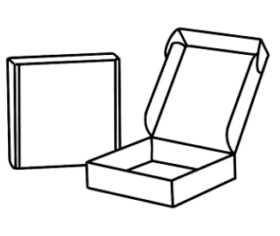 Bául
Bául Box-pallet
Box-pallet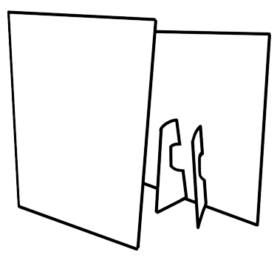 Displays
Displays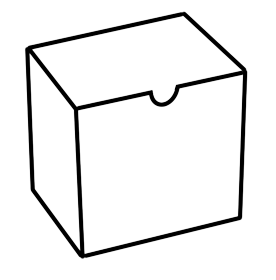 Estuchería
Estuchería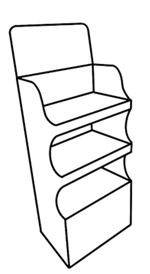 Expositor
Expositor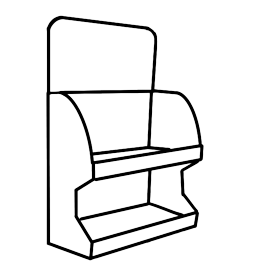 Exp.sobremesa
Exp.sobremesa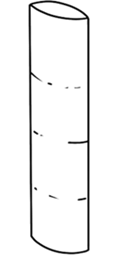 Tótem
Tótem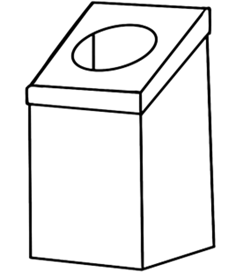 Otros
Otros
